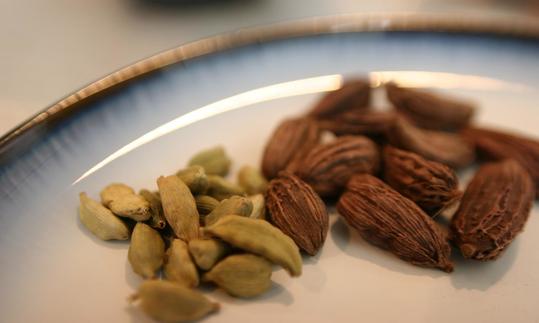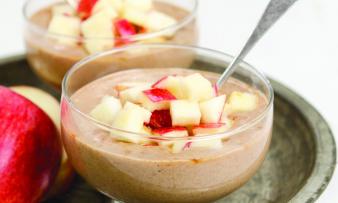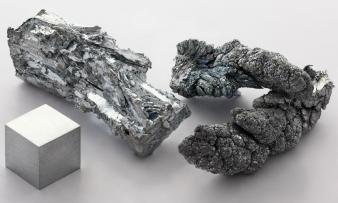Table of contents
Green cardamom (botanical name: Elettaria cardamomum ) or cardamom (not cardamon) is used not only as a traditional spice, but also as a medicinal herb. Black cardamom ( Amomum subulatum ) is related but not described here.
Use in the kitchen:
With green cardamom ( Elettaria cardamomum ), a member of the ginger family, it is not the rhizome that is used as a spice - unlike ginger or turmeric - but the capsule fruits (cardamoms) with the seeds they contain.
What does cardamom taste like? Cardamom has a slightly eucalyptus-like, sweet and spicy aroma that is best known in Europe in Christmas biscuits such as gingerbread or speculaas. However, green cardamom is used in some fruit dishes, compotes, sausages, liqueurs and chocolate; or it is included in spice mixtures. Cardamom is the "icing on the cake" in many dishes. Due to its intensity, however, it should be used sparingly.
Green cardamom is an essential ingredient in Asian and Arabic cuisine. Cardamom is traditionally found in Indian masalas, curry powder, pilaf (rice dishes) and chai tea. Arabs drink their mocha with a touch of cardamom powder. In Scandinavia, the spice is incorporated into sweet baked goods and mulled wine.
What can you use as a substitute for cardamom? Very good alternatives are cinnamon and cloves. Instead of 1 teaspoon of ground cardamom, you can use 1/2 teaspoon of cinnamon powder and 1/2 teaspoon of clove powder. Other options are nutmeg , ginger or allspice or a combination of these. Use nutmeg and allspice sparingly (half the amount of cardamom specified) as they have a very intense flavor. 1
Recipe for vegan Kashmir tea:
Ingredients for a spicy Kashmir, Kashmiri or Cashmere tea (not Kashir): 1 L water, 500 ml almond milk (alternatively rice milk , oat milk etc.), 4 tsp green tea, 2 tbsp raw sugar or honey , 8 green cardamom pods, 2 cinnamon sticks . Preparation: Heat the water and plant milk, but do not boil. Add all ingredients and let it steep for about 30 minutes. Then strain and allow to cool slightly.
| Not only vegans or vegetarians should read this: Vegans often eat unhealthily. Avoidable nutritional mistakes . |
Shopping - where to buy?
Whole or ground cardamom is usually available in supermarkets such as Coop , Migros , Spar , Rewe , Edeka , Volg , packaged in small bags, cans or spice jars. Discounters such as Aldi , Lidl , Hofer and Denner tend to only stock cardamom in the autumn and pre-Christmas period. Spice or delicatessen shops as well as online shops sell very good quality cardamom.
High-quality seed capsules have a fresh green color and the seeds are oily black. Malabar cardamom ( Elettaria cardamomum var. cardamomum ) grows on the Malabar Coast in India and is the most valuable of its kind. Ceylon cardamom ( E. cardamomum var. major ) is of inferior quality. It comes from Sri Lanka, where the famous Ceylon cinnamon grows.
Purchased cardamom powder also contains the tasteless fruit shells and loses its aroma very quickly. Therefore, you should buy whole cardamom pods and grind or crush the seeds contained therein if necessary.
Found wild:
Cardamom still grows wild in the rainforests of southern India and in Sri Lanka.
Storage:
Cardamom seeds lose their essential oils very quickly when exposed to light and air. The capsules protect the seeds from losing their aroma to some extent, but try to store the capsules in an airtight, dark and cool place. To guarantee fresh, fully aromatic seeds, buy small quantities and buy more as needed.
Ingredients - Nutritional value - Calories:
Cardamom, a rather rarely used spice, has an energy content of 311 kcal/100g. The dried spice has a very favorable macronutrient ratio of 80:13:8 (carbohydrates:protein:fat) with a water content of about 8%. 2
The trace element content of cardamom is particularly noteworthy. Manganese is contained in cardamom at 28 mg/100g, as is saffron . This value is very high, as wheat germ (10 mg) and hazelnuts (6 mg) also have a high manganese content. Manganese is essential, which means that it must be consumed through food. Sufficient manganese is essential for the development of healthy cartilage tissue. 2
Iron is also essential and is well represented in cardamom with 14 mg/100g. 100 g of cardamom a day would cover 100% of our daily iron requirements. 3 Of course, you can't eat that much cardamom. But spices can make a good contribution to replenishing iron stores. Many plant-based foods are good sources of iron: herbs such as dried thyme (123 mg), seeds such as pumpkin seeds (12.5 mg), but also pulses ( lentils 8 mg) and vegetables ( spinach 4.1 mg) should not be underestimated in a good combination. 2
Zinc is essential for wound healing, the immune system and insulin storage. If you eat too one-sidedly, regardless of the type of diet, you can become deficient. Cardamom contains 7.5 mg of zinc per 100 g. In addition to spices, whole grains, seeds, kernels, nuts and pulses contain a lot of zinc; wheat germ (12 mg), unpeeled hemp seeds (10 mg) and lentils (3.7 mg) have slightly less. But dried porcini mushrooms (11 mg) also have a high proportion. 2
The macro mineral magnesium is important for enzymatic metabolic reactions and, as is well known, a high proportion also helps with cramps. Cardamom contains 229 mg/100g. Seeds and nuts are an excellent source of magnesium: Unpeeled hemp seeds are almost unbeatable at 700 mg/100g. Sunflower seeds (325 mg), almonds (270 mg), but also buckwheat (230 mg) and quinoa (197 mg) can be easily integrated into the daily diet. The foods mentioned far surpass the promising banana with a magnesium content of 27 mg. 2
Potassium is responsible for cell growth and water balance in the cells. With a balanced vegan diet, the potassium requirement is generally well covered. Cardamom has 1,119 mg/100g. Dried herbs have a particularly high potassium content; e.g. parsley (2,680 mg), chickpeas (720 mg), lamb's lettuce (460 mg) and bananas (360 mg) are also good sources of potassium. 2
Cardamom contains 383 mg/100g of calcium . It gives bones and teeth their stability and strength. Dark green vegetables and herbs are excellent sources of calcium: nettle leaves (481 mg), rocket (160 mg), kale (150 mg). Sesame also has a very high calcium content at 975 mg/100g. 2
The ingredients of cardamom also include essential oils such as campesterol and stigmasterol as well as camphor and salicylates.
Health aspects - effects:
What is cardamom good for? The essential oil of cardamom seeds promotes saliva, stomach and bile secretion and is virostatic (inhibits the proliferation of viruses).
The drug name for the cardamom fruit is Cardamomi fructus (syn. Fructus Cardamomi). Cardamom oil is called Cardamomi aetheroleum (syn. Oleum Cardamomi). It is rarely used as a tea in medicine. Alcoholic extracts are more commonly used in stomach remedies, which stimulate digestion and appetite and relieve flatulence. 4
Animal experiments show that cardamom has antispasmodic healing properties. Cardamom oil is also said to help against inflammation both internally and externally. 5
Dangers - Intolerances - Side effects:
Cardamom has no side effects in healthy people and in the right dose. However, if you are intolerant, it can lead to allergic reactions. If you suffer from gallstones, you should avoid cardamom. It can cause severe colic.
Cardamom should not be consumed in large quantities during pregnancy or breastfeeding. Cardamom, like cinnamon or cloves , can trigger premature labor.
Folk medicine - natural medicine:
In Northern Europe, cardamom is used because of its stomach and bile stimulating effect. As a tea or spice, it has a warming, expectorant effect and stimulates and tones the lungs and kidneys. Cardamom relaxes cramps and detoxifies caffeine. 6
Occurrence - Origin:
The origin of green cardamom is in southern India. R. Govaerts described its homeland in southwestern India. 7 People soon began to cultivate the spice in Sri Lanka, Iraq and Thailand. Today it is cultivated mainly in the tropical regions of Tanzania, Madagascar and Guatemala.
Cultivation - Harvest:
The ginger plant can reach a height of more than 4 m as a perennial plant. The rootstocks are strong, fleshy and thrive in warm, humid climates with good soil up to 1000 m above sea level. Pseudostems with bright green lance-like leaves and long inflorescences grow from them. What is a cardamom capsule? The fruit, a three-sided green capsule, can reach various sizes. It contains up to 20 brown-black seeds.
The first capsules are only harvested around 3 years after planting. The yield increases until the 7th year, after which new crops are usually planted. The main harvest is from October to December. The plant flowers all year round, so theoretically you could harvest all year round. 4
The harvest is done by hand, just before ripeness, so that the seeds do not fall out of the fruit capsules. The seed capsules are then briefly fermented so that the typical flavors develop. 8 After gentle drying, they are ready for sale.
Growing as a potted plant:
Elettaria cardamomum is also suitable for indoor cultivation, but then the flowers remain small and inconspicuous and hardly any fruit ripens. The ginger plant is used to shady places, but also forms new shoots in bright locations. You should just avoid direct sunlight. Regular watering is very important for the root ball, but the compost soil should not be too wet. During the rest period (October to March) the amount of water added should be greatly reduced. You just have to make sure that the plant does not dry out. 9
The cardamom plant feels very comfortable in temperatures in the home that do not fall below 14 °C. The plant can be repotted from spring to autumn. Cardamom can be renewed or propagated very easily by simply dividing the root ball. Pests such as mealybugs and mealybugs often attack Elettaria plants. Neem oil, a natural plant protection product made from the seeds of the neem tree, can help here. 9
Risk of confusion:
Black cardamom ( Amomum subulatum ) is also known as Nepal cardamom or brown cardamom. In English it is known as black c., hill c., Bengal c., greater c., Indian c., winged c., big c. or brown c. 10 The name bastard cardamom is also common for many people. It is very closely related to green cardamom and is used in a similar way. However, they differ significantly in taste and appearance. Black cardamom has brown capsules and a bitter, earthy aroma reminiscent of coniferous wood and camphor. It gets its typical taste from the traditional drying over an open fire. Black cardamom is used almost exclusively in spicy dishes. 11
General information:
Green cardamom ( Elettaria cardamomum ) belongs to the ginger family (Zingiberaceae). Alternative German names are Kardamompflanze, Cardamompflanze, Malabar, Malabarcardamom. Kardamum is actually incorrect in German; however, this spelling is correct in Polish and Bulgarian. The spelling Kardamon is actually incorrect too - but a very common mistake. In English, cardamom is written with a C: Cardamum or Cardamom.
The name cardamom comes from the Greek-Latin word cardamomum from the Old Indian kárdamach, which means dirt. 12 The scientific name Elettaria comes from the Indian term elettari. 6
Other uses:
The essential oil of cardamom seeds is important for the perfume industry. In some countries, the use of the tincture is subject to legal restrictions. 6
Literature - Sources:











Comments